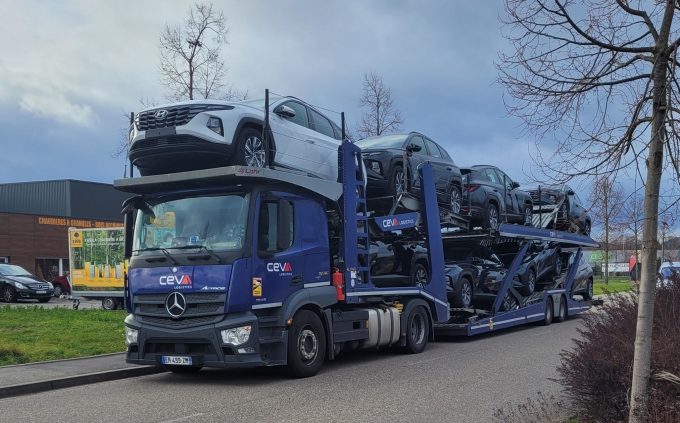Liners add capacity to Asia-ECSA as ocean rates hit 18-month high
With Asia-South America ocean freight rates at an 18-month high of around $4,350 per 40ft, ...

Capacity pressures are set to continue in automotive logistics in the coming years, while the near-shoring of car production and the increasing number of electric vehicles (EVs) coming off assembly lines will drive change in supply chain provision, according to one major player.
“High inflation rates, escalating raw material prices and the semiconductor shortage in 2022 and 2023 combined to weigh down and delay the automotive sector’s recovery from the pandemic,” Emmanuel Cheremetinski, global finished vehicle logistics leader at Ceva Logistics, told The Loadstar.
“And while automotive manufacturing looks set to remain flattish in 2024, it is still a strong market, and car makers appear ready to continue producing and moving vehicles.
“As a result, we expect the next two to three years to remain very challenging for capacity in finished vehicle logistics – deepsea and shortsea applications as well as land-based, car carrier transport. Capacity is already constrained and, while there are new vessels coming online this year and next, global demand remains strong, so capacity will remain tight.”
Ceva, which transported 5.5 million vehicles last year, is responding by deploying four new 7,000-car capacity, LNG dual-fuel hybrid vessels this year, chartered by its parent, CMA CGM, marking the ocean shipping line’s entry into the pure car and truck carrier (PCTC) space.
The first, the CMA CGM Indianapolis, recently made its first port of call, at Rotterdam.
“We expect to be able to transport approximately 140,000 vehicles a year thanks to the new vessels,” said Mr Cheremetinski.
Among other challenges near-term, he highlighted the rapid growth of EVs. he said: “In general, these are heavier, and their unique nature, due to the lithium batteries, requires unique handling all along their supply chain and transport. In addition, the size of vehicles continues to change.”
Shifting global trade dynamics and possible trade tariffs could also play a role in re-shaping automotive manufacturing and transport.
“For example, a decision is expected in 2024 related to the import of vehicles into Europe. An increase in any import taxes could create a near-shoring effect for the production of vehicles, with secondary effects on how those vehicles are then transported to end markets, – more land-based than via ocean vessels,” said Mr Cheremetinski.
However, threats of protectionism will not be near-shoring’s only driving force, he added.
“As the transition towards EVs will be long, competition for market share and time-to-market will remain fierce, while dragging on OEM profitability. Near-shoring will be one answer to such a conundrum. Therefore, supply chains and logistics operations will need to adapt.”
Aleksander Raczyński, Ceva’s head of FVL for Eastern Europe, Germany, Austria and Switzerland, pointed to the emergence of Central and Eastern Europe (CEE) as a car production powerhouse.
“After the shocks caused by the Covid-19 pandemic and Russia’s invasion of Ukraine, car production volumes in CEE have returned to pre-crisis levels,” he explained. “Eurostat data shows car production has increased by almost 50% over the past eight years.
“Poland remains the leader in the region, followed by the Czech Republic. The automotive sector is driving industry in CEE. There are new factories being built – for example, Chinese automaker BYD is setting up an EV plant in Hungary – and there is a need for investment by car-carriers. And there is big competition among logistics players to increase market share.”
Comment on this article